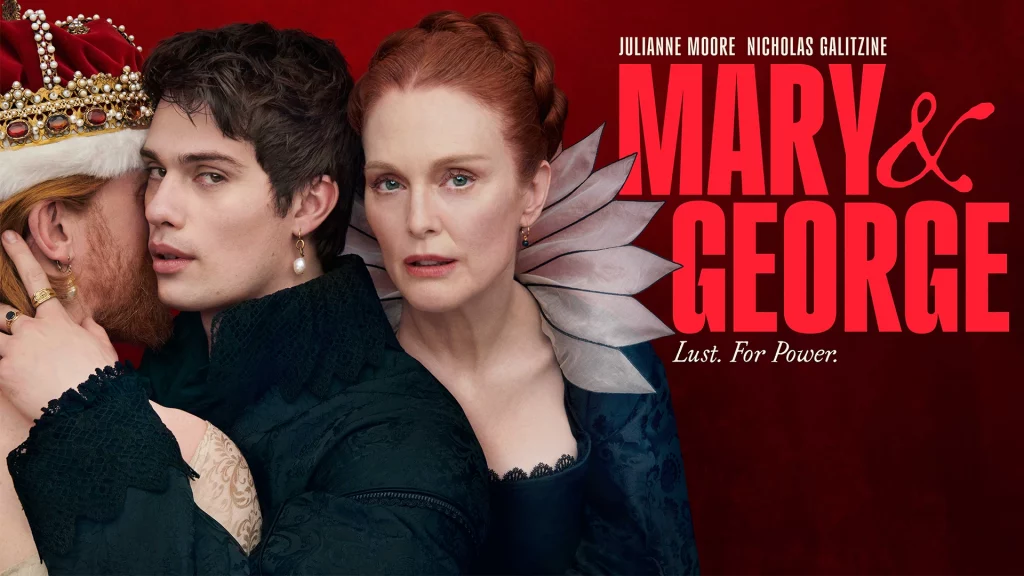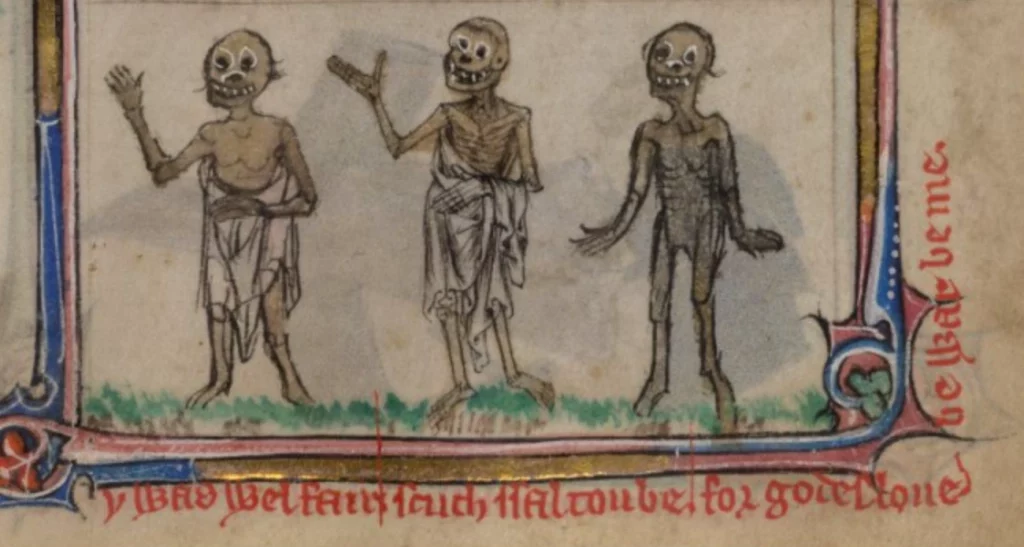Babe wake up, new Starz drama just dropped. That’s right today (at time of writing) the much anticipated Mary and George is appearing on screens. Last time out I provided some background on the titular characters and the king they schemed to get close to. This time we’re continuing with the story of King James’ affair with George Villiers with specific focus on how it ended (the king’s death) and George’s role (possibly murdering him).
This isn’t breaking down the events of the show which I haven’t binged yet. The show is based on Benjamin Woolley’s book The King’s Assassin: The Fatal Affair of George Villiers and James I in which the central argument is that George Villiers poisoned his royal lover. On that basis, I’ve included it here as a theory seeing as I can only assume it appears in the show. Given that this is a Starz show, I imagine there’s going to be a lot of salacious drama that pushes the historical record to the very limit, but the idea that George poisoned King James, is at least a theory rooted in history.
Villers' Other Patron: Charles Stuart
Continuing from Part I… King James had never known his father. The man who he knew as his father, Henry Stuart, Lord Darnley had been murdered, possibly by James’ mother, when the king was a tender seven months old. This is assuming that Darnley had been his father; there had been rumours that his mother had had an affair with her secretary David Rizzio. Incidentally, this was one of the reasons Darnley murdered Rizzio in front of a pregnant queen. For the record, we know that Rizzio had been Darnley’s lover but the affair with the queen was never more than rumours. The absolute carnage that was James’ family life before the age of one might have been why he was never particularly paternal. He did his duty to the realm by marrying and begetting heirs but he doesn’t seem to have acted as an overly loving or invested father, at least where his son Charles was concerned.
Of James’ seven children, only three lived to adulthood. The other four died anywhere from within 48 hours to 2 years of birth which regrettably, wasn’t uncommon. Charles Stuart was the youngest of these three surviving children but he was a weak child. He was sickly, suffering from an array of childhood illnesses that stunted his growth and left him with a stutter. As an adolescent, he overcame a great deal of his physical infirmities but never quite became the court superstar his older brother, Henry Frederick, was. But that was okay because Henry Frederick was going to be king and Charles as the younger brother was bound for a supporting role on the political stage.
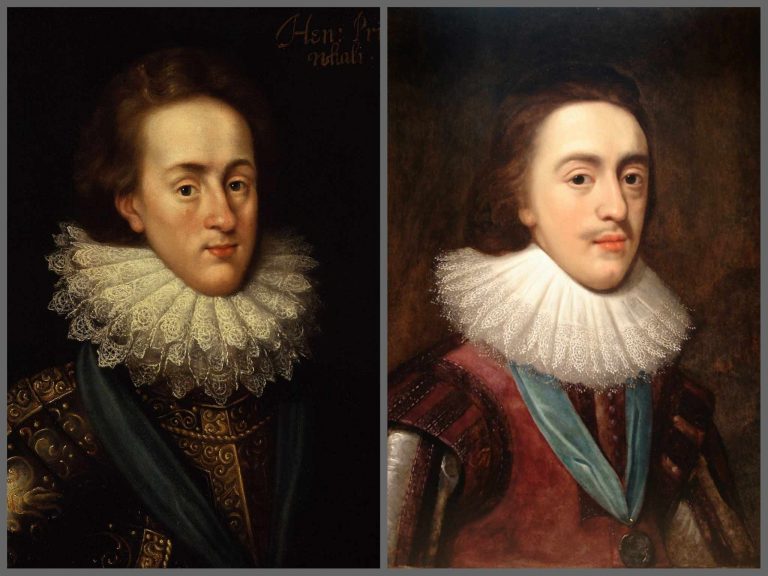
Unfortunately, Henry Frederick succumbed to typhoid fever at the age of eighteen. His death was considered a tragedy for the nation and Charles, who had idolised his brother, was much affected. He was twelve years old and suddenly thrust into the role of heir apparent. Charles had never been the favourite son and when George Villiers arrived on the scene two years later, Charles felt even more alienated. Initially, he reacted as any child would regardless of royalty. He acted out especially when he found himself in the same room as George. This then developed into him playing minor pranks on George which left James less than amused. To everyone’s surprise, George stepped in to protect Charles, and as a result a new friendship was formed.
Charles and George would become extremely close which only cemented George’s position as the royal favourite. Charles was, after all, the future king and it became even more unlikely that George could be unseated with the support of the two most powerful members of the royal family. They were also close in age, had similar interests, and perhaps most significantly; they aligned politically.
The Problem of Spain
It is often said that we don’t know what goes on behind closed doors but James and George were so publicly affectionate that the king was frequently called to defend the relationship before his councillors. In one such reckoning he famously said;
I wish to speak in my own behalf and not to have it thought to be a defect, for Jesus Christ did the same, and therefore I cannot be blamed. Christ had John, and I have George.
In private, James called him ‘Steenie’ after St Stephen who was described in the Bible as having the ‘face of an angel’. Some historians claim James that was purely heterosexual on the basis that he had the Bible translated into English, which makes the above quotes particularly hilarious to me. Our James was out here translating the Bible into English and then using it to come up with nicknames for his pretty boyfriends. My point, before I lose it, is that James and George were very much in love but there was one point on which they would come into conflict; Spain.
The political situation between Spain and England was far more complicated for an irreverent blogger, considering whether the falling out between two queer men almost five hundred years ago led to a murder, to properly articulate. So allow me to summarise the main points of contention:
- Spain was Catholic. England was Protestant.
- Spain and England did not get on. James had already executed Sir Walter Raleigh, the much beloved English hero, to appease the Spanish. His subjects were displeased.
- James’ daughter, Elizabeth, had married Frederick V of the Palatinate to become Queen of Bohemia, only to be ousted and driven into exile after a brief year-long reign by the Holy Roman Emperor supported by (wait for it) Spanish troops.
The two countries didn’t like each other and tensions were running high. However, James was a peaceful king and hoped that rather than war, a marriage between Charles and the Spanish Infanta might repair the relationship. This policy was heavily opposed by the English parliament and the Protestants at court. It didn’t help that the Spanish were dragging their heels during the negotiations.
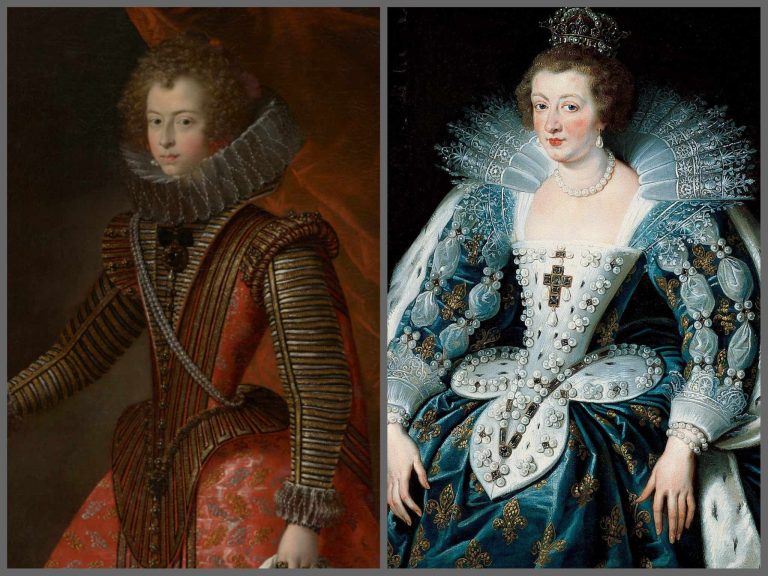
George was not yet opposed to a Spanish alliance and when it looked like there might not be a marriage he and Charles came up with a great idea. They’d go to Spain themselves, in disguise, and court the Infanta personally. She would surely not refuse them and the trip would be a masterstroke of diplomacy. Plus, as it would be done incognito, parliament wouldn’t be able to object until the deed was done. What could go wrong?
Dear Reader, everything went wrong.
I should point out that this was not one of those occasions where two incredibly important and well-known people tried to travel in disguise and everybody recognised them but played along. They actually did make the journey to Spain via France incognito as English nobles and nobody knew who they were. In France, George had some kind of affair with the French Queen, Anne of Austria and whatever they did together was enough for the King to ban any men from entering the queen’s chambers in future.
When they arrived in Spain, the Spanish court was horrified that the Prince of Wales had come unannounced in this manner. They covered it with immediate hospitality, masques, receptions, and courtly entertainments but behind the public facing facade, George and Charles were not well received. They learned quickly that Spain hated England as much as England hated Spain. There was no intention of confirming a marriage with the Infanta unless James repealed anti-Catholic laws parliament would never have allowed. On top of all this, the Infanta herself had absolutely no inclination to marry a heretic.
Charles was apparently quite taken with the Infanta and tried to meet her at every possible opportunity but she did not reciprocate and would not meet in return. Every romantic gesture was met with obstruction or awkwardness and Spain was adamant there would be no marriage unless Charles himself converted to Catholicism. George and Charles were now in a political stalemate on largely hostile soil having arrived without any kind of support. They were there for six months, during which time, for all intents and purposes, they were hostages. James was forced to agree to every Spanish condition and reluctanty Charles signed a preliminary marriage treaty which finally allowed them to go home.
The Aftermath
Although Charles had signed a treaty, it was clear to everyone that the Spanish match was never going to go ahead. When they returned to England, Charles and George, affronted by their treatment abroad, now turned completely on Spain and pushed for war instead. While this made George a hero to the commons and the Protestant nobles, it alienated him from James.
While George and Charles ingratiated themselves with parliament, championing war with Spain, James was still pushing for peace via marriage with the Infanta. James became increasingly isolated from the running of his own country and in turn, became suspicious of George who he accused of being more interested in Charles and politics than their relationship. For George, battle lines had been drawn and he went as far as threatening to end their affair if James continued to promote Spanish interests.
After a year of this political back and fore, James gave an inch. He broke off negotiations with Spain and endorsed George and Charles’ efforts. This did not however lead to any reconciliation between the two lovers. James resented having to make such a decision and was now openly arguing with George. This was exarcebated by the Spanish who were desperate to avert war (they couldn’t afford it) and so brought in an ambassador specifically to fracture the already fractious relationship.
James suspected that George was plotting against him for Charles’ benefit. He felt like George was planning to cut him off politically and force him into retirement, allowing Charles to rule in favour of their mutual policies. At one point, the two had an argument while travelling in the royal coach. Their rather public tiff ended with both men crying and James leaving George in the road.
By May 1624, James was convinced the relationship was over and bereft without his lover. They were brought back together by the most unlikely of circumstances; George fell perilously ill.
George became so severely ill so quickly there were rumours that he’d been poisoned. James immediately dispatched the royal physicians to treat George and was alarmed when they reported that they feared for his life. James sped to his side, nursing George until he was no longer in danger.
George retired to one of his houses in Essex to recover and while there, he wrote a letter of reconciliation to the king. James wrote back and what followed was a flurry of correspondance that reaffirmed their feelings for each other and repaired the recent cracks that had formed.
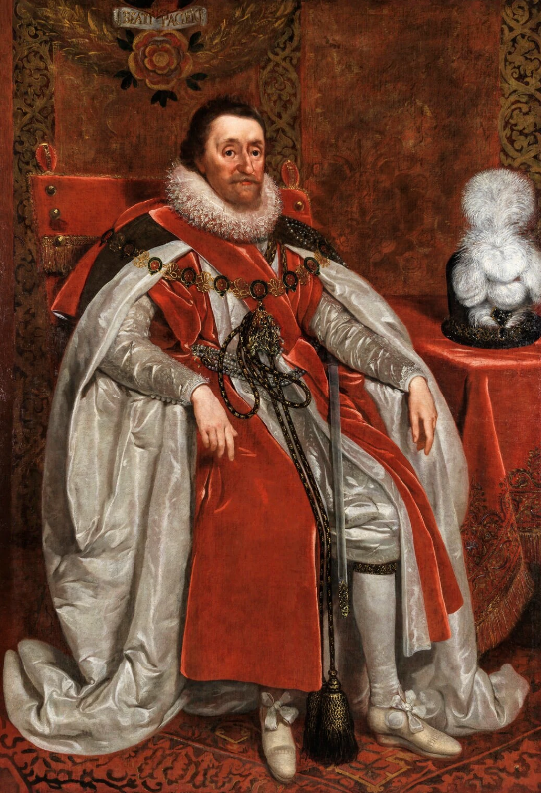
The King is Dead, Long Live the King
A month after he had retired to Essex, George returned to court. He had mostly recovered though it was obvious to anyone who looked at him that he had suffered terribly during his illness. But along with his health, he had also recovered the king’s favour and the two were inseperable once again. The Spanish ambassador hired to split them up was sent away and a young man brought forward to potentially replace George found himself in Fleet Prison for his boldness.
George and Charles continued their efforts for war with Spain and a marriage between the prince and a French princess but George’s involvement no longer alienated James. They were back to being their happy selves. But it was not to last. In March 1625 it was James’ turn to fall ill.
Initially, George couldn’t be with James beyond comforting letters and James seems to have recovered from his initial attack (thought to be malaria). The king’s chief physician was abroad at the time, so when George visited the king it was with a small group of doctors, alchemists, and other peddlars that could loosely be considered medical men. There were protests that some of these men were not sworn into the king’s service and therefore had no buisiness treating royalty, but James was happy to rely on George and allowed it. The most significant point regarding this gaggle of ‘physicians’ is not that some of them weren’t, but that there was no sustained, clear, or consistent treatment plan drawn up. There were eight of them, plus George and his mother who treated the king based on what they saw in front of him without consulting the others. George gave James a daily potion, and banished the doctors who protested. Mary treated him with plasters which were also questioned but Charles told the doctors to leave them to it. Ointments and treatments were administered without any knowledge of what the king had already been dosed with.
Two weeks later, James’ condition deteriorated severely and rapidly. He protested George’s potion, claiming he was trying to murder him but this was dismissed as a delusion. As James went from bad to worse, and the doctors who treated him began to point fingers and cover their own asses, his health was committed to the Archbishop of Canterbury – a sign that he was going to die. Sure enough, on the 27th March 1525 the king died with George at his side.
Still Favourite. Still Steenie. Possibly Poisoner
For George, little practically changed in the aftermath of James’ death. He was already the favourite of the new king, he retained his titles and positions, if anything he had more power now that the king endorsed his politics and he didn’t have to have sex with Charles to secure it. (Presumably).
George was devastated in the aftermath and followed the funeral procession as the most notable of the noble mourners. Devastated by grief, some wondered if George would ever recover. But their worries were unfounded. Just a few hours after the funeral, George enthusiastically offered to visit France and escort Charles’ new French bride back to England. He had already ordered an entirely new wardrobe for the occasion.
Off he went, reigniting his affair with the French queen while he was there, before he finally remembered to return with Charles’ bride Henrietta Marie. She did not like George and was thoroughly unimpressed by the whole proceedings. She remained unimpressed long after her journey and after she had come to England and married Charles in person. She refused to attend Charles’ coronation leaving George to act as Charles’ consort for the day.
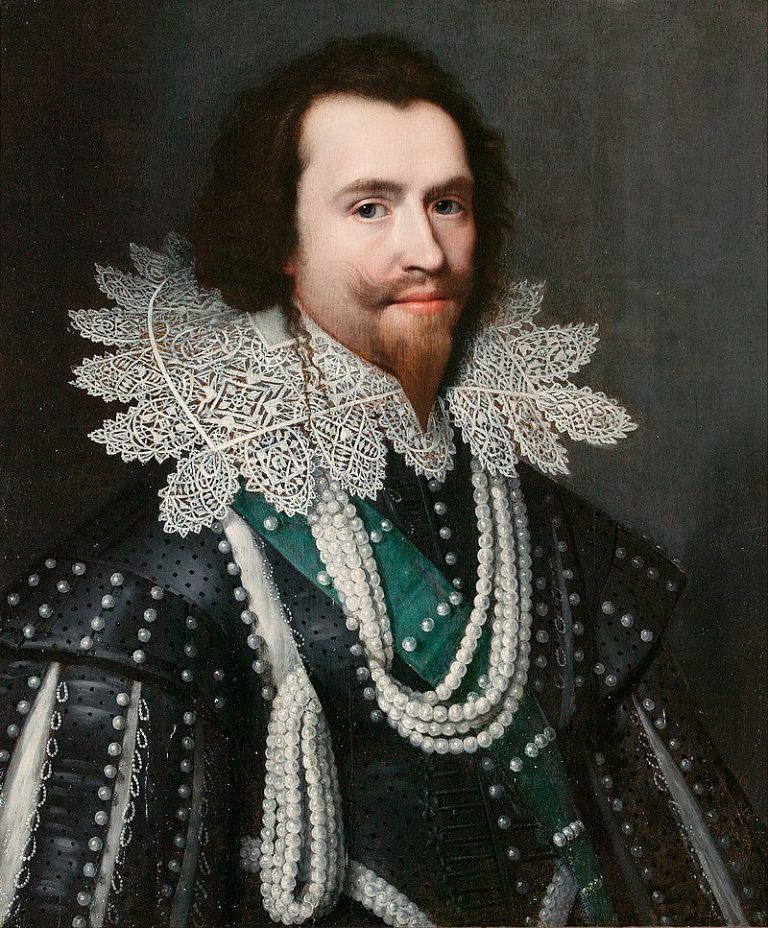
Rumours that King James had been poisoned had been circulating since his death. This was hardly unusual as any illness among royalty or nobility was usually ascribed to poison. But attention was on the myriad of doctors who had treated the king rather than George. That is, until George made himself immensely unpopular with his complete and utter failure of his anti-Spanish campaigning. Oblivious to the turn in public support, George continued to make poor decisions. At one point a campaign to capture a Spanish treasure fleet and restore the crown’s finances went so poorly it almost bankrupted the treasury. George was left trying to pawn the crown jewels to recoup the losses. The rumours continued.
Eventually, a pamphlet was published, presenting what everybody felt was common knowledge – George Villiers had poisoned the king. George was finally presented with the question and he responded in a way that he felt demonstrated how ridiculous the accusations were. He refused to answer them. He thought he was brazenly facing down his detractors by refusing to dignify such base rumours with a response but in reality he was just giving them more reason to suspect him.
Did George Villiers poison King James?
Parliament began an investigation but immediately found themselves obstructed. The new king didn’t want the matter investigated, George refused to answer any questions, and the doctors weren’t exactly forthcoming fearing incrimination at best, reprisals at worst.
Eventually, an inquiry was formed and the allegations were laid out. First, there was the fact that George had brought in several doctors, some of whom had not been royal physicians and others who had not even been doctors. Their lack of coordinated treatment which at the time might have been seen as ineptitude was now considered malicious. Then there was the wine laced with an unknown white powder that George had dosed James with daily. On top of this, George’s mother, Mary, was brought into the recollections. She had applied a plaster to the king’s chest that caused him breathing problems and smelled so badly upon its removal that some of the doctors feared it had been poisoned. Then it transpired that after the king had passed, George’s first act had been to force all the doctors to retroactively approve his mysterious white powder. The doctors presented different opinions on everything including whether or not Mary and George’s intervention had been useful.
The one thing they were in complete, absolute, and total agreement on was that Mary and George had used their treatments at a critical point during James’ recovery and had at the very least caused his rapid deterioration. The evidence against George was certainly stacking up but then the doctors offered up something previously unknown. It was revealed for at least part of James’ illness, Charles had been present. Concerned about the impact George and Mary’s treatments were having on the king, the doctors approached Charles and asked him to entrust the king’s care entirely to the physicians. Charles refused.
The trial now went in a direction that nobody wanted. Nobody wanted to drag the new king into the proceedings and nobody wanted to attempt prosecute the king’s renowned favourite. Unsurprisingly, the situation deteriorated faster than King James after one of George’s potions.
Charles imprisoned one of the doctors, another was murdered in the street by an angry mob, and threats were made to George that he would be next. Parliament kept investigating and on two different occasions tried to separately impeach him for his military failings. Both times, Charles dissolved parliament rather than see George suffer consequences. Instead, George and Charles came up with this great plan that George would go to Spain on a military campaign that would be so successful everyone would forget all the scandal and failings surrounding George.
The plan was described as ‘ambitious’ which is a polite way of saying likely impossible but we’ll never know how it would have played out. George went to Portsmouth to oversee the plans for his forthcoming expedition. While breakfasting in an inn, a former army lieutenant, John Felton approached and stabbed him in the chest. The thirty-five year old George staggered for a moment, and gasped with astonishment before he collapsed and died.
Epilogue
Mary Villiers was not shocked at the news of her son’s death. In fact, she was barely surprised and some speculated that she had been expecting it. For a mother who had lost her son, her reaction and subsequent behaviour was described as cold. For a woman who had groomed him from childhood to become the court favourite and elevate the family fortunes, it was bizarrely unfeeling and detached.
King Charles on the other hand was devastated and withdrew into his private chambers for two days before he could face it. The country however, rejoiced. Church bells were rung without sanction, celebrations erupted across the country, and the assassin was hailed as a hero. He had surrendered to the king’s guard shortly after escaping the scene of the crime and had, on his person, several papers that declared he was not a madman or anything like it and that he undertook the murder of George Villiers as a true patriot. Opinion on whether he was a national hero was divided; the entire country felt he was but Charles thought he wasn’t.
Convinced that he couldn’t have killed George alone, Felton’s interrogators tried to determine the identity of his accomplices. They applied to torture him but this was denied. Small mercies as he was hanged anyway three months after the assassination. The authorities ordered his body to be put on display as was the standard for traitors, but it backfired when Felton’s corpse became almost a religious icon and the man was revered as a Protestant martyr.
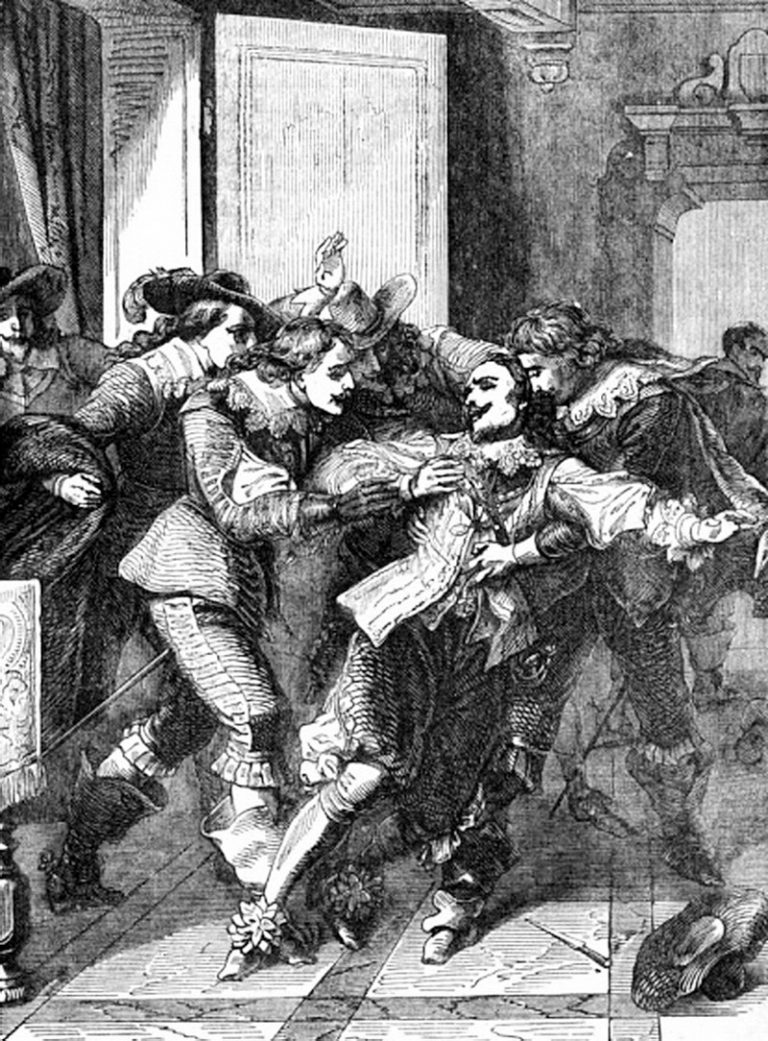
George’s body had been returned to London where it had lain in state until the funeral in mid-September. Flying in the face of convention, Charles ordered that George be laid to rest within the part of Westminster Abbey reserved for royalty. His funeral was held quietly at night however for fear of public protest and disruption.
Mary Villiers outlived her son by only four years and like her son, she was also buried in Westminster Abbey. Her first husband who had given her the Villiers name had already been buried in their home county upon his death some twenty-five years earlier but she had already paid for her monument to include him upon her death. The placement of her tomb was proof enough of the position that she attained and yet, the inscription she comissioned also demonstrates her pretentions, even in death, entirely undeterred by the death of her favourite son;
To God the best and greatest. The bones of Mary Beaumont, Countess of Buckingham, descended from five of the most powerful kings of Europe, by five direct descents.
If you’re interested in reading more, check out The King’s Assassin by Benjamin Woolley. Purchasing through this affiliate link helps to support this site.
In the meantime, as ever you can come and find me for more behind the scenes and other weird historical tidbits at my Patreon.

